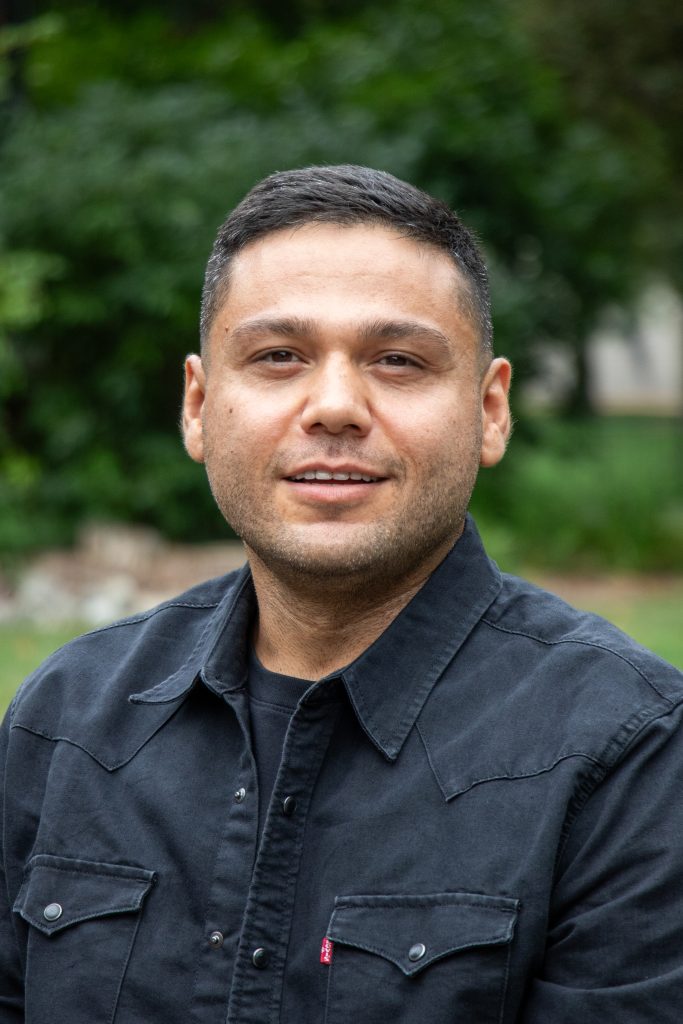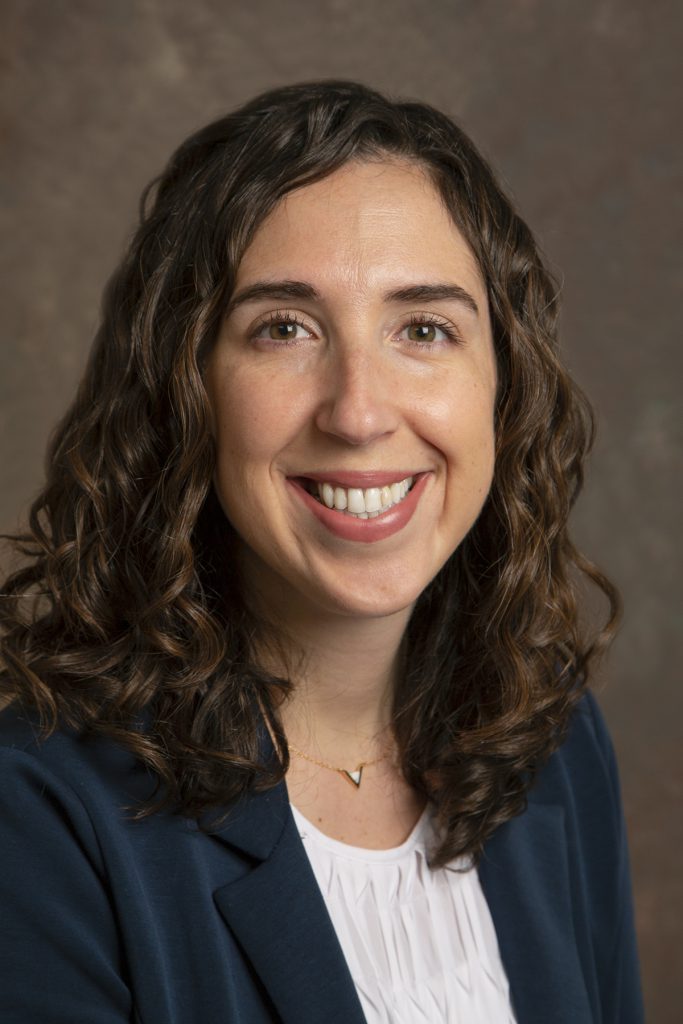Research Spotlight: Mousavi, Earnshaw and Layland

CEHD research team publishes new review of studies on the developmental process of coming out for LGBTQ+ youth
Many people think about LGBTQ+ identity disclosure—or the act of coming out—as a singular event that happens during one conversation or social interaction. But, in a new review of studies, University of Delaware doctoral student Mohammad Mousavi, Associate Professor Valerie Earnshaw, Assistant Professor Eric Layland and Norman Chong of the University of Malaya found that coming out for LGBTQ+ youth is a complex, developmental process extending over time and across diverse contexts.
After screening nearly 5,500 articles and closely scrutinizing 29 studies, they also found that research on LGBTQ + youth disclosure is advancing and evolving, with increasing attention to the reasons for or against disclosure and associated mental health outcomes.
“Results of this study challenge the idea that coming out is a single, one-time event where adolescents announce their LGBTQ+ identity and then move forward,” said Layland, who studies LGBTQ+ development in UD’s College of Education and Human Development (CEHD). “Many LGBTQ+ people come out in many different ways and places over their life, including in adolescence. By taking a developmental approach to identity disclosure, we see clear evidence of a complex process that includes navigating relationships, sorting through intentions and goals when coming out and grappling with the costs and benefits of disclosing a stigmatized sexual or gender identity.”
Disclosure as a process
Published in Adolescent Research Review, this article addresses an important gap in the field by providing the first systematic review of studies on LGBTQ+ youth disclosure and by adopting a disclosure process model (DPM) as its organizing principle. The DPM provides a comprehensive framework for examining disclosure decisions, events, mediating processes (like gathering social or financial supports) and outcomes.
Using this model, the researchers investigate components of the coming out process, the individual and contextual factors shaping this process and the most commonly studied outcomes. In line with their approach, the majority of the articles they reviewed also explored disclosure as a process rather than a singular event. A few studies even considered disclosure over time.
Disclosure goals
Among many takeaways, the researchers found that nearly all of the articles they examined highlight LGBTQ+ youth’s reasons for or against coming out. More than half of the articles they examined highlighted avoidance goals or reasons against disclosure.
“The biggest barriers to disclosing sexual identity are rooted in reasons for avoiding disclosure primarily driven by stigma, fear of rejection and concerns about family support,” said Mousavi, a Ph.D. student in human development and family sciences. “Although LGBTQ+ youth are increasingly coming out at younger ages due to more culturally supportive environments, anticipated stigma still shapes their decision-making processes. Sexual and gender minority stigma, such as homophobia and heteronormativity, often leads LGBTQ+ youth to avoid disclosure to protect themselves from emotional harm or social isolation.”
However, about a third of the articles highlighted approach goals or reasons for disclosure.
“A major developmental task of adolescence and early adulthood is growing to understand and confirm our identities and social belonging,” Mousavi said. “For LGBTQ+ adolescents, a big part of this process is understanding and sharing their sexual and gender identities. In fact, the most common reasons for disclosing include the desire to live authentically, to manage one’s identity and to seek a sense of community belonging.”
Many articles reported a mix of positive and negative reactions to disclosure, while several reported mostly negative responses and a few reported mostly positive responses. Negative reactions included emotional reactions (such as shock, disappointment, anger and grief), disbelief, attempts to change youth’s sexual orientation and withdrawal of financial and emotional support, among others. Positive reactions included expressions of unconditional love and acceptance, affirmation of youth identity, desire for youth to be happy and financial and emotional support, among others.
Disclosure outcomes
The researchers also found that mental health was the most commonly reported disclosure outcome. Many articles highlighted positive mental health outcomes, including higher self-esteem, lower depression, positive psychosocial adjustment in young adulthood, positive affect and wellbeing across social contexts. But, many also reported negative outcomes, like psychological distress, depression, anxiety, suicidal ideation and self-harm, especially if the individual did not receive a positive response after coming out.
Several articles reported other types of outcomes that were not common across studies. For example, two articles found that coming out was associated with negative behavioral health outcomes including alcohol and drug use. Very few articles reported relationship or interpersonal outcomes. For example, one article found that youth experienced bullying from peers at school and negative reactions from teachers after coming out.
“Ultimately, we hope that this study further demonstrates that adolescents need support across the full disclosure process, not just the moments when they share their identity out loud for the first time,” Layland said. “Affirmation and support for adolescents coming out must occur before, during and after disclosure of their LGBTQ+ identity.”
Further directions for research
In light of their findings, the researchers identify several directions for future research on LGBTQ+ youth and the coming out process. For example, although reactions were well-studied in these articles, the actual content of the disclosure event or conversation was rarely documented. Similarly, only a small number of articles addressed how disclosure occurred as a social interaction. For example, one study found that LGBTQ+ youth prefer to disclose through online means (rather than in person).
Most importantly, the researchers encourage future studies to take a developmental approach to disclosure, examining processes over time that both precede and follow disclosure events. Future researchers could consider many markers of developmental time such as chronological age, stage of development (early adolescence versus late adolescence) or time since a disclosure event.
Layland similarly encourages parents and educators to take a developmental approach in supporting LGBTQ+ youth.
“Be prepared for adolescents to evolve in how they describe their identities and their needs over time; changes in an identity label are common in adolescence and should never be interpreted as evidence that LGBTQ+ identities are transient phases,” Layland said. “Allow LGBTQ+ adolescents the freedom to explore, change and grow just as we would all other young people.”
To learn more about CEHD research in social determinants of health, including disclosure and stigma, visit its research page.
Article by Jessica Henderson. Illustration by Jeff Chase.

About Mohammad Mousavi
Mohammad Mousavi is a Ph.D. student in the CEHD’s Department of Human Development and Family Sciences. He also serves as research assistant under the mentorship of Associate Professor Valerie Earnshaw in the Stigma & Health Inequities Lab. Mousavi’’s research interests are in stigma, with a specific focus on stigma in relation HIV/AIDS, mental illness, substance use disorder and the LGBTQ+ community. He is interested in conducting longitudinal studies on stigma affecting these populations and developing interventions to address stigma.

About Valerie Earnshaw
Valerie Earnshaw is an associate professor in CEHD’s Department of Human Development and Family Sciences. Her research focuses on understanding and addressing associations between stigma and health inequities across the lifespan. Much of her current research focuses on stigma associated with substance use disorders, HIV and mental illness. Through her work, she also aims to contribute to interventions to improve the wellbeing of stigmatized children, youth and families.

About Eric Layland
Eric Layland is an assistant professor in CEHD’s Department of Human Development and Family Sciences. He bridges LGBTQ+ developmental research and community impact through developmentally-informed, affirmative interventions. His research areas include LGBTQ+ within-group differences in mental health and unhealthy substance use, the impact of stigma on LGBTQ+ development, strengths-based approaches to LGBTQ+ health and LGBTQ+ affirmative interventions.
Social Determinants of Health Faculty in CEHD
This research complements the work of CEHD faculty studying the social determinants of health, including Stephanie Del Tufo, Heather Farmer, Allison Karpyn and Kate Riera.



